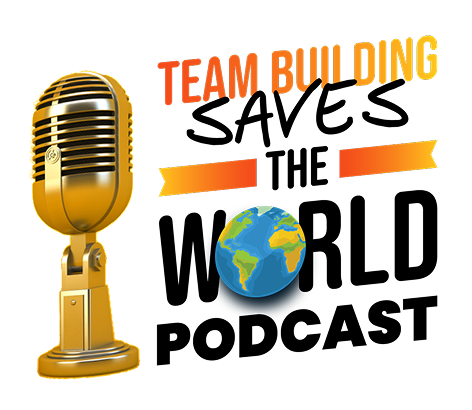Upskilling in the Workplace: Building Human Skills for the Age of AI
Artificial intelligence is no longer a far-off idea. It’s here, shaping industries, reimagining workflows, and forcing companies to rethink how they develop their people. From automated customer support to predictive analytics, AI is transforming the way we work at a breathtaking pace. But while the technology itself moves fast, people don’t adapt overnight.
That’s where reskilling and upskilling in the workplace come in. Leaders who prioritize these strategies aren’t just filling skill gaps. They’re building resilient, future-ready teams. In today’s environment, investing in employee development is no longer optional. It’s essential for survival and growth.
This article will dive into why reskilling and upskilling matter in the age of AI, what skills can’t be replaced, and how you can equip your employees to thrive in a rapidly changing workplace.
What Is Reskilling and Upskilling, and Why Does It Matter?
First, let’s clarify the terms. Reskilling employees means teaching them new skills so they can take on entirely different roles within your organization. For example, a manufacturing worker might learn coding to move into robotics programming. Upskilling, on the other hand, is about sharpening the skills people already have. A marketer might learn advanced data analysis tools to improve campaign performance, or a manager might develop stronger communication techniques to lead hybrid teams more effectively.
In a world where AI and automation are shifting job responsibilities daily, both approaches are critical. Some jobs are being phased out, others are evolving, and entirely new ones are being created. If you don’t prepare your team for that reality, you risk falling behind.
Beyond business survival, reskilling and upskilling your employees sends a powerful message: you value them. You’re not just hiring talent for today’s needs. You’re investing in the long-term growth of your employees. You’re focused on what they bring you now and in the future. That investment builds loyalty, engagement, and trust.
How AI Is Changing the Skills Your Team Needs
Think about the last time you tried a new piece of technology. Maybe it was a project management app, a generative AI tool, or a new HR platform. Did it feel intuitive, or did you feel a little overwhelmed? Multiply that feeling across your entire team, and you’ll see why AI adoption can be challenging.
AI is transforming work in two big ways:
- Automating routine tasks. From data entry to scheduling, software is handling jobs that used to require hours of human effort.
- Elevating expectations. Employees are now expected to analyze, strategize, and problem-solve at higher levels.
That means the skills your team needs are changing. It’s not just about knowing how to click buttons in a new system. It’s about thinking differently – employees need to understand how to use AI as a tool rather than seeing it as a threat.
TeamBonding offers innovative ways to ease this transition. Programs like Breaking News AI and AI Takeover Challenge immerse employees in AI-driven scenarios where they practice adaptability and problem-solving in real time. Instead of a dry training session, these events spark curiosity and make AI approachable.
When employees learn in this kind of environment, they pick up skills and build confidence. That confidence is the foundation for every successful reskilling effort.
Why Emotional Intelligence Training Still Matters
Here’s the thing: no matter how advanced AI becomes, it can’t replicate emotional intelligence. Machines don’t empathize. They don’t build trust. They don’t navigate the complex emotions that come with teamwork, leadership, or conflict.
That’s why communication and emotional intelligence training are more important than ever. As Rob Fletcher, our resident Emotional Intelligence Trainer, explains:
“As AI continues to change how we work, the one area humans continue to win is emotional intelligence. Even the smartest employees aren’t successful if they can’t communicate effectively.”
Research from the Harvard Business School echoes this, showing that emotional intelligence is a defining trait of effective leadership and a key driver of organizational success.
This is the human edge. AI can crunch numbers and generate insights, but it can’t replace the skills that make teams thrive:
- Active listening.
- Navigating conflict.
- Understanding nonverbal cues.
- Leading with empathy.
Programs like Emotional Intelligence Team Building and Effective Communication give employees a safe, engaging space to practice these skills. They learn how to collaborate more effectively, build stronger relationships, and approach challenges with empathy.
In an AI-powered workplace, these are more than just “soft skills.” They’re essential for the workforce.
Benefits of Upskilling and Reskilling Employees
Why should leaders make reskilling and upskilling a top priority? Because the benefits ripple through every part of your organization.
- Retention & Engagement: Employees who see clear development opportunities are more likely to stay. When you help people grow, you reduce turnover and boost loyalty. In fact, research from SHRM found that upskilling programs are increasingly being used as a powerful retention strategy, giving employees confidence in their future with the company.
- Agility: Teams that are used to learning adapt faster. They don’t resist change; instead, they expect it and lean into it.
- Innovation: When people are learning, they’re also experimenting, questioning, and creating. That drives innovation at every level.
- Culture: A culture of growth strengthens bonds and creates a shared sense of purpose. Employees feel part of something bigger than themselves.
The bottom line: reskilling isn’t just about plugging skill gaps. It’s about shaping a workplace where people want to stay, grow, and contribute.
How to Upskill Team Members in the Age of AI
If you’re wondering how to upskill staff effectively, here’s a simple framework you can adapt:
- Identify the gaps. What skills will your company need in the next three to five years? Where are employees struggling today?
- Mix hard and soft skills. Don’t just teach people how to use new tools. Help them build leadership, collaboration, and emotional intelligence too.
- Create peer-learning opportunities. Encourage departments to share expertise. For example, IT could teach marketing how to leverage data dashboards, while marketing shares insights on storytelling and communication.
- Make it fun. Gamified programs and interactive events keep employees engaged. That’s where team building activities shine. They turn learning into a positive experience.
One of the most effective strategies is to make training continuous rather than one-off. A single workshop might inspire your team, but ongoing opportunities reinforce and deepen the skills.
Practical Upskilling Ideas for Teams
So how do you bring reskilling and upskilling into your everyday culture? Here are some practical approaches:
- Workshops & Bootcamps: Host targeted sessions on emerging tools like generative AI, project management software, or advanced analytics.
- Cross-Training: Rotate employees into different roles. A salesperson who understands operations brings a new perspective to both areas.
- Hybrid Learning: Combine online modules with in-person team building. For instance, pair e-learning on AI basics with an interactive challenge like Breaking News AI.
- Mentorship Programs: Connect newer employees with seasoned leaders who can guide them through both technical and interpersonal growth.
- Gamified Experiences: Turn training into a challenge with points, recognition, or team competitions.
There’s no single path to reskilling and upskilling. The right mix depends on your goals, your people, and how your team learns best. That’s why TeamBonding offers over 200 customizable programs designed to help you create learning experiences that stick.
Building a Culture of Continuous Learning
Reskilling and upskilling succeed when they’re woven into company culture. That means moving beyond “once-a-year” training and instead creating a rhythm of growth.
Leaders set the tone. When they show curiosity, admit what they don’t know, and embrace new tools, employees follow their lead. The message is clear: learning isn’t just allowed. It’s expected.
This aligns with the concept of a growth mindset. Teams with a growth mindset see challenges as opportunities, not obstacles. They embrace feedback. They celebrate effort as much as results. And most importantly, they know that skills can always be developed.
In a hybrid or remote workplace, culture matters even more. Upskilling in the workplace gives employees a reason to connect, collaborate, and stay engaged even when they’re not physically together. It builds bridges across departments, offices, and time zones.
The Human Side of Reskilling
While AI often dominates the headlines, the human side of reskilling is just as important. Imagine being told the job you’ve done for years is evolving into something entirely new. Without support, that can feel scary. But with the right training and encouragement, it becomes exciting. It’s a chance to grow into a role that’s more creative, impactful, or future-oriented.
That’s why framing matters. Leaders who approach reskilling with empathy—explaining the “why” and supporting employees through the transition—build trust and loyalty. It’s not about replacing people with machines. It’s about equipping people to succeed alongside machines.
Reskilling, CSR, and Employee Engagement
One overlooked benefit of reskilling is how it ties into corporate social responsibility. When you provide learning opportunities, you’re strengthening your workforce, yes, but you’re also contributing to society by building a more adaptable, skilled population. Employees who feel supported in this way are more engaged, more motivated, and more connected to their company’s mission.
This connection fuels everything from morale to retention. When employees believe their company cares about their future, they care more about the company’s success.
The Business Case for Reskilling in the Age of AI
If you’re still on the fence about reskilling, let’s talk numbers. Research from the World Economic Forum estimates that by 2030, over one billion people worldwide will need to be reskilled due to the adoption of automation and AI. Talk about a wake-up call.
The cost of doing nothing is high. Employees who feel unprepared for new technology often disengage, leading to decreased productivity and higher turnover. Recruitment to replace them is far more expensive than training the people you already have. By contrast, companies that invest in upskilling training not only save money but also gain a reputation as employers of choice. That reputation attracts top talent and builds a virtuous cycle of growth.
Think of reskilling as insurance. It protects your workforce from obsolescence and your company from disruption.
Leadership’s Role in Reskilling and Upskilling
Leaders play a pivotal role in making reskilling successful. It’s not enough to fund training programs; you need to actively champion them. Employees notice whether their managers attend workshops, ask questions about new tools, or encourage curiosity.
Modeling matters. When leaders demonstrate vulnerability by admitting what they don’t know and eagerness to learn, it creates psychological safety. That safety encourages employees to take risks, try new things, and embrace change.
Leaders should also recognize that reskilling is about confidence. An employee who believes in their ability to adapt will approach challenges with a completely different mindset than one who feels left behind. Supporting that confidence may be the most powerful leadership act of all.
Looking Ahead: The Future of Work and Continuous Reskilling
The truth is, reskilling isn’t a one-time project. Technology will continue to evolve, and so will the skills required to thrive. That’s why companies must commit to upskilling and reskilling the workforce on an ongoing basis.
Expect to see learning become more personalized, with AI itself helping identify skill gaps and recommend tailored training. Imagine a system that recognizes when an employee struggles with a task and instantly suggests a learning module or a team building activity designed to help.
Forward-thinking companies won’t wait for disruption to force their hand. They’ll create continuous learning ecosystems (blending technology, mentorship, and team building) to keep employees ahead of the curve.
In other words, the future belongs to companies that treat reskilling not as a trend, but as a cornerstone of their culture.
Prepare Your Team for the Future of Work
Artificial intelligence is changing the game, but it doesn’t have to be a threat. By investing in upskilling and reskilling the workforce, you’re preparing for tomorrow’s challenges and creating a workplace where people feel valued, engaged, and inspired to grow.
The companies that will thrive in the coming years are those that balance tech readiness with human connection. AI can automate tasks, but it can’t replace empathy, creativity, or collaboration. Those skills remain uniquely human and they’re more valuable than ever.
If you’re ready to future-proof your team, explore TeamBonding’s professional development programs. From AI-focused experiences to emotional intelligence workshops, these events turn learning into an engaging team building experience. Because in the age of AI, the best investment you can make is in your people.
Get more insights in our newsletter:
* every subscription supports charity!
Plays well with these activities.


 Unlock exclusive resources for better teams. Every subscription supports charity!
Unlock exclusive resources for better teams. Every subscription supports charity!
Create Your Free Account
Get exclusive access to new programs from the TeamBonding Lab, save your favorite ideas, and track your upcoming events.
Already have an account? Login











